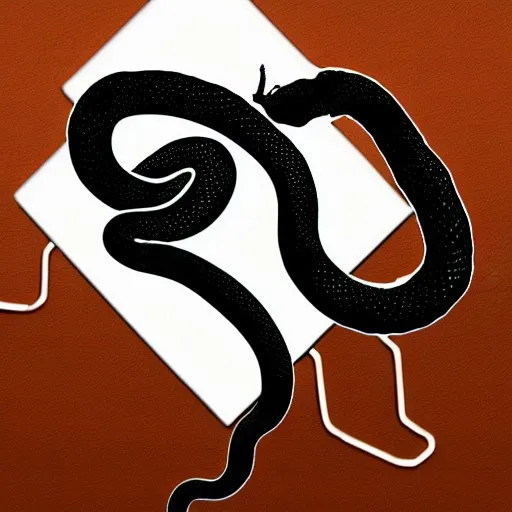The White House wants to ‘cryptographically verify’ videos of Joe Biden so viewers don’t mistake them for AI deepfakes::Biden’s AI advisor Ben Buchanan said a method of clearly verifying White House releases is “in the works.”
Digital signature as a means of non repudiation is exactly the way this should be done. Any official docs or releases should be signed and easily verifiable by any public official.
Removed by mod
Would someone have a high level overview or ELI5 of what this would look like, especially for the average user. Would we need special apps to verify it? How would it work for stuff posted to social media
linking an article is also ok :)
Depending on the implementation, there are two cryptographic functions that might be used (perhaps in conjunction):
-
Cryptographic hash: An arbitrary amount of data (like a video file) is used to create a “hash”—a shorter, (effectively) unique text string. Anyone can run the file through the same function to see if it produces the same hash; if even a single bit of the file is changed, the hash will be completely different and you’ll know the data was altered.
-
Public key cryptography: A pair of keys are created, one of which can only encrypt data (but can’t decrypt its own output), and the other, “public” key can only decrypt data that was encrypted by the first key. Users (like the White House) can post their public key on their website; then if a subsequent message purporting to come from that user can be decrypted using their public key, it proves it came from them.
a shorter, (effectively) unique text string
A note on this. There are other videos that will hash to the same value as a legitimate video. Finding one that is coherent is extraordinarily difficult. Maybe a state actor could do it?
But for practical purposes, it’ll do the job. Hell, if a doctored video with the same hash comes out, the White House could just say no, we punished this one, and that alone would be remarkable.
Finding one that is coherent is extraordinarily difficult.
You’d need to find one that was not just coherent, but that looked convincing and differed in a way that was useful to you—and that likely wouldn’t be guaranteed, even theoretically.
Pigeon hole principle says it does for any file substantially longer than the hash value length, but it’s going to be hard to find
There are other videos that will hash to the same value
This concept is known as ‘collision’ in cryptography. While technically true for weaker key sizes, there are entire fields of mathematics dedicated to probably ensuring collisions are cosmically unlikely. MD5 and SHA-1 have a small enough key space for collisions to be intentionally generated in a reasonable timeframe, which is why they have been deprecated for several years.
To my knowledge, SHA-2 with sufficiently large key size (2048) is still okay within the scope of modern computing, but beyond that, you’ll want to use Dilithium or Kyber CRYSTALS for quantum resistance.
SHA family and MD5 do not have keys. SHA1 and MD5 are insecure due to structural weaknesses in the algorithm.
Also, 2048 bits apply to RSA asymmetric keypairs, but SHA1 is 160 bits with similarly sized internal state and SHA256 is as the name says 256 bits.
ECC is a public key algorithm which can have 256 bit keys.
Dilithium is indeed a post quantum digital signature algorithm, which would replace ECC and RSA. But you’d use it WITH a SHA256 hash (or SHA3).
Good catch, and appreciate the additional info!
Public key cryptography would involve signatures, not encryption, here.
-
The best way this could be handled is a green check mark near the video that you could click on it and it would give you all the meta data of the video (location, time, source, etc) with a digital signature (what would look like a random string of text) that you could click on and your browser would show you the chain of trust, where the signature came from, that it’s valid, probably the manufacturer of the equipment it was recorded on, etc.
Just make sure the check mark is outside the video.
Browser controlled modal.
The issue is making that green check mark hard to fake for bad actors. Https works because it is verified by the browser itself, outside the display area of the page. Unless all sites begin relying on a media player packed into the browser itself, if the verification even appears to be part of the webpage, it could be faked.
The only thing that comes to mind is something that forces interactivity outside the browser display area; out of the reach of Javascript and CSS. Something that would work for both mobile and desktop would be a toolbar icon that is a target for drag-and-drop. Drag the movie or image to the “verify this” target, and you get a dialogue or notification outside the display area. As a bonus, it can double for verifying TLS on hyperlinks while we’re at it.
Edit: a toolbar icon that’s draggable to the image/movie/link should also work the same. Probably easier for mobile users too.
If you set the download manager icon in the browser as permanently visible, then dragging it there could trigger the verification to also run if the metadata is detected, and to then also show whichever metadata it could verify.
That’s a tad obscure, but makes it much easier to code up a prototype. I like it.
Do not show a checkmark by default! This is why cryptographers kept telling browsers to de-emphasize the lock icon on TLS (HTTPS) websites. You want to display the claimed author and if you’re able to verify keypair authenticity too or not.
Fair point, I agree with this. There should probably be another icon in the browser that shows if all, some, or none of the media on a page has signatures that can be validated. Though that gets messy as well, because what is “media”? Things can be displayed in a web canvas or SVG that appears to be a regular image, when in reality it’s rendered on the fly.
Security and cryptography UX is hard. Good point, thanks for bringing that up! Btw, this is kind of my field.
I run /r/crypto at reddit (not so active these days due to needing to keep it locked because of spam bots, but it’s not dead yet), usability issues like this are way too common
I ran /r/cryptotechnology for years, and am good friends with the /r/cc mods. Reddit is a mess though, especially in the crypto areas.
it would potentially be associated with a law that states that you must not misrepresent a “verified” UI element like a check mark etc, and whilst they could technically add a verified mark wherever they like, the law would prevent that - at least for US companies
it may work in the same way as hardware certifications - i believe that HDMI has a certification standard that cables and devices must be manufactured to certain specifications to bear the HDMI logo, and the HDMI logo is trademarked so using it without permission is illegal… it doesn’t stop cheap knock offs, but it means if you buy things in stores in most US-aligned countries that bear the HDMI mark, they’re going to work
There’s already some kind of legal structure for what you’re talking about: trademark. It’s called “I’m Joe Biden and I approve this message.”
If you’re talking about HDCP you can break that with an HDMI splitter so IDK.
TLDR: trademark law yes, combined with a cryptographic signature in the video metadata… if a platform sees and verifies the signature, they are required to put the verified logo prominently around the video
i’m not talking about HDCP no. i’m talking about the certification process for HDMI, USB, etc
(random site that i know nothing about): https://www.pacroban.com/en-au/blogs/news/hdmi-certifications-what-they-mean-and-why-they-matter
you’re right; that’s trademark law. basically you’re only allowed to put the HDMI logo on products that are certified as HDMI compatible, which has specifications on the manufacturing quality of cables etc
in this case, you’d only be able to put the verified logo next to videos that are cryptographically signed in the metadata as originating from the whitehouse (or probably better, some federal election authority who signs any campaign videos as certified/legitimate: in australia we have the AEC - australian electoral commission - a federal body that runs our federal elections and investigations election issues, etc)
now this of course wouldn’t work for sites outside of US control, but it would at least slow the flow of deepfakes on facebook, instagram, tiktok, the platform formerly known as twitter… assuming they implemented it, and assuming the govt enforced it
For the average end-user, it would look like “https”. You would not have to know anything about the technical background. Your browser or other media player would display a little icon showing that the media is verified by some trusted institution and you could learn more with a click.
In practice, I see some challenges. You could already go to the source via https, EG whitehouse.gov, and verify it that way. An additional benefit exists only if you can verify media that have been re-uploaded elsewhere. Now the user needs to check that the media was not just signed by someone (EG whitehouse.gov. ru), but if it was really signed by the right institution.
As someone points out above, this just gives them the power to not authenticate real videos that make them look bad…
Videos by third parties, like Trump’s pussy grabber clip, would obviously have to be signed by them. After having thought about it, I believe this is a non-starter.
It just won’t be as good as https. Such a signing scheme only makes sense if the media is shared away from the original website. That means you can’t just take a quick look at the address bar to make sure you are not getting phished. That doesn’t work if it could be any news agency. You have to make sure that the signer is really a trusted agency and not some scammy lookalike. That takes too much care for casual use, which defeats the purpose.
Also, news agencies don’t have much of an incentive to allow sharing their media. Any cryptographic signature would only make sense for them if directs users to their site, where they can make money. Maybe the potential for more clicks - basically a kind of clickable watermark on media - could make this take off.
I honestly feel strategies like this should be mitigated by technically savvy journalism, or even citizen journalism. 3rd parties can sign and redistribute media in the public domain, vouching for their origin. While that doesn’t cover all the unsigned copies in existence, it provides a foothold for more sophisticated verification mechanisms like a “tineye” style search for media origin.
Adobe is actually one of the leading actors in this field, take a look at the Content Authenticity Initiative (https://contentauthenticity.org/)
Like the other person said, it’s based on cryptographic hashing and signing. Basically the standard would embed metadata into the image.
Not very well apparently
It needs some kind of handler, but we mostly have those in place. A web browser could be the handler for instance. A web browser has the green dot on the upper left, telling you a page is secure, that https is on and valid. This could work like that, the browser can verify the video and display a green or red dot in the corner, the user could just mouse over it/tap on it to see who it’s verified to be from. But it’s up to the user to mouse over it and check if it says whitehouse.gov or dr-evil-mwahahaha.biz
TL;DR: one day the user will see an overlay or notification that shows an image/movie is verified as from a known source. No extra software required.
Honestly, I can see this working great in future web browsers. Much like the padlock in the URL bar, we could see something on images that are verified. The image could display a padlock in the lower-left corner or something, along with the name of the source, demonstrating that it’s a securely verified asset. “Normal” images would be unaffected. The big problem is how to put something on the page that cannot be faked by other means.
It’s a little more complicated for software like phone apps for X or Facebook, but doable. The problem is that those products must choose to add this feature. Hopefully, losing reputation to being swamped with unverifiable media will be motivation enough to do so.
The underlying verification process is complex, but should be similar to existing technology (e.g. GPG). The key is that images and movies typically contain a “scratch pad” area in the file for miscellaneous stuff (metadata). This is where the image’s author can add a cryptographic signature for the file itself. The user would never even know it’s there.
Probably you’d notice a bit of extra time posting for the signature to be added, but that’s about it, the responsibility for verifying the signature would fall to the owners of the social media site and in the circumstances where someone asks for a verification, basically imagine it as a libel case on fast forward, you file a claim saying “I never said that”, they check signatures, they shrug and press the delete button and erase the post, crossposts, and if it’s really good screencap posts and those crossposts of the thing you did not say but is still being attributed falsely to your account or person.
It basically gives absolute control of a person’s own image and voice to themself, unless a piece of media is provable to have been made with that person’s consent, or by that person themself, it can be wiped from the internet no trouble.
Where it comes to second party posters, news agencies and such, it’d be more complicated but more or less the same, with the added step that a news agency may be required to provide some supporting evidence that what they said is not some kind of misrepresentation or such as the offended party filing the takedown might be trying to insist for the sake of their public image.
Of course there could still be a YouTube “Stats for Nerds”-esque addin to the options tab on a given post that allows you to sign-check it against the account it’s attributing something to, and a verified account system could be developed that adds a layer of signing that specifically identifies a published account, like say for prominent news reporters/politicians/cultural leaders/celebrities, that get into their own feed so you can look at them or not depending on how ya be feelin’ that particular scroll session.
i wouldn’t say signature exactly, because that ensures that a video hasn’t been altered in any way: no re-encoded, resized, cropped, trimmed, etc… platforms almost always do some of these things to videos, even if it’s not noticeable to the end-user
there are perceptual hashes, but i’m not sure if they work in a way that covers all those things or if they’re secure hashes. i would assume not
perhaps platforms would read the metadata in a video for a signature and have to serve the video entirely unaltered if it’s there?
You don’t need to bother with cryptographically verifying downstream videos, only the source video needs to be able to be cryptographically verified. That way you have an unedited, untampered cut that can be verified to be factually accurate to the broadcast.
The White House could serve the video themselves if they so wanted to. Just use something similar to PGP for signature validation and voila. Studios can still do all the editing, cutting, etc - it shouldn’t be up to the end user to do the footwork on this, just for the studios to provide a kind of ‘chain of custody’ - they can point to the original verification video for anyone to compare to; in order to make sure alterations are things such as simple cuts, and not anything more than that.
you don’t even need to cryptographically verify in that case because you already have a trusted authority: the whitehouse… of the video is on the whitehouse website, it’s trusted with no cryptography needed
the technical solutions only come into play when you’re trying to modify the video and still accurately show that it’s sourced from something verifiable
heck you could even have a standard where if a video adds a signature to itself, editing software will add the signature of the original, a canonical immutable link to the file, and timestamps for any cuts to the video… that way you (and by you i mean anyone; likely hidden from the user) can load up a video and be able to link to the canonical version to verify
in this case, verification using ML would actually be much easier because you (servers) just download the canonical video, cut it as per the metadata, and compare what’s there to what’s in the current video
Rather that using a hash of the video data, you could just include within the video the timestamp of when it was originally posted, encrypted with the White House’s private key.
That doesn’t prove that the data outside the timestamp is unmodified
It does if you can also verify the date of the file, because the modified file will be newer than the timestamp. An immutable record of when the file was first posted (on, say, YouTube) lets you verify which version is the source.
No it does not because you can cut out the timestamp and put it into anything if the timestamp doesn’t encode anything about the frame contents.
It is always possible to backdate file edits.
Sure, public digital timestamping services exists, but most people will not check. Also once again, an older timestamp can simply be cut out of one file and posted into another file.
You absolutely must embedd something which identifies what the media file is, which can be used to verify ALL of the contents with cryptographic signatures. This may additionally refer to a verifiable timestamp at some timestamping service.
Apple’s scrapped on-device CSAM scanning was based on perceptual hashes.
The first collision demo breaking them showed up in hours with images that looked glitched. After just a week the newest demos produced flawless images with collisions against known perceptual hash values.
In theory you could create some ML-ish compact learning algorithm and use the compressed model as a perceptual hash, but I’m not convinced this can be secure enough unless it’s allowed to be large enough, as in some % of the original’s file size.
you can definitely produced perceptual hashes that collide, but really you’re not just talking about a collision, you’re talking about a collision that’s also useful in subverting an election, AND that’s been generated using ML which is something that’s still kinda shakey to start with
Perceptual hash collision generators can take arbitrary images and tweak them in invisible ways to make them collide with whichever hash value you want.
from the comment above, it seems like it took a week for a single image/frame though… it’s possible sure but so is a collision in a regular hash function… at some point it just becomes too expensive to be worth it, AND the phash here isn’t being used as security because the security is that the original was posted on some source of truth site (eg the whitehouse)
No, it took a week to refine the attack algorithm, the collision generation itself is fast
The point of perceptual hashes is to let you check if two things are similar enough after transformations like scaling and reencoding, so you can’t rely on that here
oh yup that’s a very fair point then! you certainly wouldn’t use it for security in that case, however there are a lot of ways to implement this that don’t rely on the security of the hash function, but just uses it (for example) to point to somewhere in a trusted source to manually validate that they’re the same
we already have the trust frameworks; that’s unnecessary… we just need to automatically validate (or at least provide automatic verifyability) that a video posted on some 3rd party - probably friendly or at least cooperative - platform represents reality
I have said for years all media that needs to be verifiable needs to be signed. Gpg signing lets gooo
Very few people understand why a GPG signature is reliable or how to check it. Malicious actors will add a “GPG Signed” watermark to their fake videos and call it a day, and 90% of victims will believe it.
As soon as VLC adds the gpg sig feature, it’s over.
No, it’s not. People don’t use VLC to watch misinformation videos. They see it on Reddit, Facebook, YouTube, or TikTok.
…how popular do you think VLC is among those who don’t understand cryptographic signatures?
And that will in no way be the first step on the road to VLC deciding which videos it allows you to play…
Yeah but all it takes is proving it doesn’t have the right signature and you can make the Social Media corpo take every piece of media with that signature just for that alone.
What’s even better is that you can attack entities that try to maliciously let people get away with misusing their look and fake being signed for failing to defend their IP, basically declaring you intend to take them to court to Public Domainify literally everything that makes them any money at all.
If billionaires were willing to allow disinformation as a service then they wouldn’t have gone to war against news as a service to make it profitable to begin with.
The average Joe won’t know what any of what you just said means. Hell, the Joe in the OP doesn’t know what any of you just said means. There’s no way (IMO) of simultaneously creating a cryptographic assurance and having it be accessible to the layman.
There is, but only if you can implement a layer of abstraction and get them to trust that layer of abstraction.
Few laymen understand why Bitcoin is secure. They just trust that their wallet software works and because they were told by smarter people that it is secure.
Few laymen understand why TLS is secure. They just trust that their browser tells them it is secure.
Few laymen understand why biometric authentication on their phone apps is secure. They just trust that their device tells them it is secure.
Each of those perfectly illustrates the problem with adding in a layer of abstraction though:
Bitcoin is a perfect example of the problem. Since almost nobody understands how it works, they keep their coins in an exchange instead of a wallet and have completely defeated the point of cryptocurrency in the first place by reintroducing blind trust into the system.
Similarly, the TLS ecosystem is problematic. Because even though it is theoretically supposed to verify the identity of the other party, most people aren’t savvy enough to check the name on the cert and instead just trust that if their browser doesn’t warn them, they must be okay. Blind trust one again is introduced alongside the necessary abstraction layers needed to make cryptography palatable to the masses.
Lastly, people have put so much trust in the face scanning biometrics to wake their phone that they don’t realize they may have given their face to a facial recognition company who will use it to help bring about the cyberpunk dystopia that we are all moving toward.
Huh. They actually do something right for once instead of spending years trying to ban A.I tools. I’m pleasantly surprised.
Bingo. If, at the limit, the purpose of a generative AI is to be indistinguishable from human content, then watermarking and AI detection algorithms are absolutely useless.
The ONLY means to do this is to have creators verify their human-generated (or vetted) content at the time of publication (providing positive proof), as opposed to attempting to retroactively trying to determine if content was generated by a human (proving a negative).
I mean banning use cases is deffo fair game, generating kiddy porn should be treated as just as heinous as making it the “traditional” way IMO
Yikes! The implication is that it does not matter if a child was victimized. It’s “heinous”, not because of a child’s suffering, but because… ?
Man imagine trying to make “ethical child rape content” a thing. What were the lolicons not doing it for ya anymore?
As for how it’s exactly as heinous, it’s the sexual objectification of a child, it doesn’t matter if it’s a real child or not, the mere existence of the material itself is an act of normalization and validation of wanting to rape children.
Being around at all contributes to the harm of every child victimised by a viewer of that material.
I see. Since the suffering of others does not register with you, you must believe that any “bleeding heart liberal” really has some other motive. Well, no. Most (I hope, but at least some) people are really disturbed by the suffering of others.
I take the “normalization” argument seriously. But I note that it is not given much credence in other contexts; violent media, games, … Perhaps the “gateway drug” argument is the closest parallel.
In the very least, it drives pedophiles underground where they cannot be reached by digital streetworkers, who might help them not to cause harm. Instead, they form clandestine communities that are already criminal. I doubt that makes any child safer. But it’s not about children suffering for you, so whatever.
Man imagine continuing to try and argue Ethical Child Rape Content should be a thing.
If we want to make sweeping attacks on character, I’d rather be on the “All Child Rape Material is Bad” side of the argument but whatever floats ya boat.
I don’t think he’s arguing that, and I don’t think you believe that either. Doubt any of us would consider that content ethical, but what he’s saying is it’s not nearly the same as actually doing harm (as opposed what you said in your original post).
You implying that anyone who disagrees with you is somehow into those awful things is extremely poor taste. I’d expect so much more on Lemmy, that is a Reddit/Facebook level debate tactic. I guess I’m going to get accused of that too now?
I don’t like to give any of your posts any credit here, but I can somewhat see the normalization argument. However, where is the line drawn regarding other content that could be harmful because normalized. What about adult non consensual type porn, violence on TV and video games, etc. Sliding scale and everyone might draw the line somewhere else. There’s good reason why thinking about an awful things (or writing, drawing, creating fiction about it) is not the same as doing an awful thing.
I doubt you’ll think much of this, but please really try to be better. It’s 2024, time to let calling anyone you disagree with a pedo back on facebook in the 90s.
Idk, making CP where a child is raped vs making CP where no children are involved seem on very different levels of bad to me.
Both utterly repulsive, but certainly not exactly the same.
One has a non-consenting child being abused, a child that will likely carry the scars of that for a long time, the other doesn’t. One is worse than the other.
E: do the downvoters like… not care about child sexual assault/rape or something? Raping a child and taking pictures of it is very obviously worse than putting parameters into an AI image generator. Both are vile. One is worse. Saying they’re equally bad is attributing zero harm to the actual assaulting children part.
Man imagine trying to make the case for Ethical Child Rape Material.
You are not going to get anywhere with this line of discussion, stop now before you say something that deservedly puts you on a watchlist.
I’m not making the case for that at all, and I find you attempting to make out that I am into child porn a disgusting debate tactic.
“Anybody who disagrees with my take is a paedophile” is such a poor argument and serves only to shut down discussion.
It’s very obviously not what I’m saying, and anybody with any reading comprehension at all can see that plainly.
You’ll notice I called it “utterly repulsive” in my comment - does that sound like the words of a child porn advocate?
The fact that you apparently don’t care at all about the child suffering side of it is quite troubling. If a child is harmed in its creation, then that’s obviously worse than some creepy fuck drawing loli in Inkscape or typing parameters into an AI image generator. I can’t believe this is even a discussion.
I don’t blame them for wanting to, but this won’t work. Anyone who would be swayed by such a deepfake won’t believe the verification if it is offered.
Agreed and I still think there is value in doing it.
I honestly do not see the value here. Barring maybe a small minority, anyone who would believe a deepfake about Biden would probably also not believe the verification and anyone who wouldn’t would probably believe the administration when they said it was fake.
The value of the technology in general? Sure. I can see it having practical applications. Just not in this case.
It helps journalists, etc, when files have digital signatures verifying who is attesting to it. If the WH has their own published public key for signing published media and more then it’s easy to verify if you have originals or not.
Problem is that broadly speaking, you would only sign the stuff you want to sign.
Imagine you had a president that slapped a toddler, and there was a phone video of it from the parents. The white house isn’t about to sign that video, because why would they want to? Should the journalists discard it because it doesn’t carry the official White House blessing?
It would limit the ability for someone to deep fake an official edit of a press briefing, but again, what if he says something damning, and the ‘official’ footage edits it out, would the press discard their own recordings because they can’t get it signed, and therefore not credible?
That’s the fundamental challenge in this sort of proposal, it only allows people to endorse what they would have wanted to endorse in the first place, and offers no mechanism to prove/disprove third party sources that are the only ones likely to carry negative impressions.
But then the journalists have to check if the source is trustworthy, as usual. Then they can add their own signature to help other papers check it
To that extent, we already have that.
I go to ‘https://cnn.com’, I have cryptographic verification that cnn attests to the videos served there. I go to youtube, and I have assurances that the uploader is authenticated as the name I see in the description.
If I see a repost of material claimed to be from a reliable source, I can go chase that down if I care (and I often do).
It’s not a challenge, because this is only valid for photos and videos distributed by the White House, which they already wouldn’t do.
The challenge is that it would have to leave out all the photos and videos taken by journalists and spectators. That’s where the possible baby slapping would come out, and we would still have no idea whether to trust it
I don’t even think that matters when Trump’s people are watching media that won’t verify it anyway.
The world is not black and white. There are not just trump supporters and Biden supporters. I know it’s hard to grasp but there are tons of people in the the toss up category.
You’re right that this probably won’t penetrate the deeply perverted world of trump cultists, but the wh doesn’t expect to win the brainwashed over. They are going for those people who could go one way or another.
I find it hard to believe that there are too many people who truly can’t decide between Trump and Biden at this point. The media really wants a horse race here, but if your mind isn’t made up by this point, I think you’re unlikely to vote in the first place.
I’ll be happy to be proven wrong and have this sway people who might vote for Trump to vote for Biden though.
So, the race is basically already decided but there is a conspiracy among the media and polling companies to make it look like the race is actually close and that there are undecides. Of course, the only way to prove this wrong would be with polls, but we’ve conveniently already just rejected that evidence. Very convenient.
Sure, the grandparents that get all their news via Facebook might see a fake Biden video and eat it up like all the other hearsay they internalize.
But, if they’re like my parents and have the local network news on half the damn time, at least the typical mainstream network news won’t be showing the forged videos. Maybe they’ll even report a fact check on it?!?
And yeah, many of them will just take it as evidence that the mainstream media is part of the conspiracy. That’s a given.
I don’t think that’s what this is for. I think this is for reasonable people, as well as for other governments.
Besides, passwords can be phished or socially engineered, and some people use “abc123.” Does that mean we should get rid of password auth?
Deepfakes could get better. And if they do, a lot more people will start to get fooled
Yeah good luck getting to general public to understand what “cryptographically verified” videos mean
The general public doesn’t have to understand anything about how it works as long as they get a clear “verified by …” statement in the UI.
The problem is that even if you reveal the video as fake,the feeling it reinforces on the viewer stays with them.
“Sure that was fake,but the fake that it seems believable tells you everything you need to know”
“Herd immunity” comes into play here. If those people keep getting dismissed by most other people because the video isn’t signed they’ll give up and follow the crowd. Culture is incredibly powerful.
Democrats will want cryptographically verified videos, Republicans will be happy with a stamp that has trumps face on it.


I mean, how is anyone going to crytographically verify a video? You either have an icon in the video itself or displayed near it by the site, meaning nothing, fakers just copy that in theirs. Alternatively you have to sign or make file hashes for each permutation of the video file sent out. At that point how are normal people actually going to verify? At best they’re trusting the video player of whatever site they’re on to be truthful when it says that it’s verified.
Saying they want to do this is one thing, but as far as I’m aware, we don’t have a solution that accounts for the rampant re-use of presidential videos in news and secondary reporting either.
I have a terrible feeling that this would just be wasted effort beyond basic signing of the video file uploaded on the official government website, which really doesn’t solve the problem for anyone who can’t or won’t verify the hash on their end.
Maybe some sort of visual and audio based hash, like musicbrainz ids for songs that are independant of the file itself but instead on the sound of it. Then the government runs a server kind of like a pgp key server. Then websites could integrate functionality to verify it, but at the end of the day it still works out to a “I swear we’re legit guys” stamp for anyone not techinical enough to verify independantly thenselves.
I guess your post just seemed silly when the end result of this for anyone is effectively the equivalent of your “signed by trump” image, unless the public magically gets serious about downloading and verifying everything themselves independently.
Fuck trump, but there are much better ways to shit on king cheeto than pretending the average populace is anything but average based purely on political alignment.
You have to realize that to the average user, any site serving videos seems as trustworthy as youtube. Average internet literacy is absolutely fucking abysmal.
People aren’t going to do it, the platforms that 95% of people use (Facebook, Tik Tok, YouTube, Instagram) will have to add the functionality to their video players/posts. That’s the only way anything like this could be implemented by the 2024 US election.
In the end people will realise they can not trust any media served to them. But it’s just going to take time for people to realise… And while they are still blindly consuming it, they will be taken advantage of.
If it goes this road… Social media could be completely undermined. It could become the downfall of these platforms and do everyone a favour by giving them their lives back after endless doom scrolling for years.
Do it basically the same what TLS verification works, sure the browsers would have to add something to the UI to support it, but claiming you can’t trust that is dumb because we already use that to trust the site your on is your bank and not some scammer.
Sure not everyone is going to care to check, but the check being there allows people who care to reply back saying the video is faked due to X
It could work the same way the padlock icon worked for SSL sites in browsers back in the day. The video player checks the signature and displays the trusted icon.
It needs to focus on showing who published it, not the icon
“Not everybody will use it and it’s not 100% perfect so let’s not try”
That’s not the point. It’s that malicious actors could easily exploit that lack of knowledge to trick users into giving fake videos more credibility.
If I were a malicious actor, I’d put the words “✅ Verified cryptographically by the White House” at the bottom of my posts and you can probably understand that the people most vulnerable to misinformation would probably believe it.
Fucking finally. We’ve had this answer to digital fraud for ages.
Sounds like a very Biden thing (or for anyone well into their Golden Years) to say, “Use cryptography!” but it’s not without merit. How do we verify file integrity? How to we digitally sign documents?
The problem we currently have is that anything that looks real tends to be accepted as real (or authentic). We can’t rely on humans to verify authenticity of audio or video anymore. So for anything that really matters we need to digitally sign it so it can be verified by a certificate authority or hashed to verify integrity.
This doesn’t magically fix deep fakes. Not everyone will verify a video before distribution and you can’t verify a video that’s been edited for time or reformatted or broadcast on the TV. It’s a start.
We’ve had this discussion a lot in the Bitcoin space. People keep arguing it has to change so that “grandma can understand it” but I think that’s unrealistic. Every technology has some inherent complexities that cannot be removed and people have to learn if they want to use it. And people will use it if the motivation is there. Wifi has some inherent complexities people have become comfortable with. People know how to look through lists of networks, find the right one, enter the passkey or go through the sign on page. Some non-technical people know enough about how Wifi should behave to know the internet connection might be out or the route might need a reboot. None of this knowledge was commonplace 20 years ago. It is now.
The knowledge required to leverage the benefits of cryptographic signatures isn’t beyond the reach of most people. The general rules are pretty simple. The industry just has to decide to make the necessary investments to motivate people.
The President’s job isn’t really to be an expert on everything, the job is more about being able to hire people who are experts.
If this was coupled with a regulation requiring social media companies to do the verification and indicate that the content is verified then most people wouldn’t need to do the work to verify content (because we know they won’t).
It obviously wouldn’t solve every problem with deepfakes, but at least it couldn’t be content claiming to be from CNN or whoever. And yes someone editing content from trusted sources would make that content no longer trusted, but that’s actually a good thing. You can edit videos to make someone look bad, you can slow it down to make a person look drunk, etc. This kind of content should not considered trusted either.
Someone doing a reaction video going over news content or whatever could have their stuff be considered trusted, but it would be indicated as being content from the person that produced the reaction video not as content coming from the original news source. So if you see a “news” video that has it’s verified source as “xXX_FlatEarthIsReal420_69_XXx” rather than CNN, AP News, NY Times, etc, you kinda know what’s up.
The number of 80 year olds that know what cryptography is AND know that it’s a proper solution here is not large. I’d expect an 80 year old to say something like “we should only look at pictures sent by certified mail” or “You cant trust film unless it’s an 8mm and the can was sealed shut!”
the technology to do this has existed for decades and it’s crazy to me that people aren’t doing it all the time yet
I’m sure they do. AI regulation probably would have helped with that. I feel like congress was busy with shit that doesn’t affect anything.
I salute whoever has the challenge of explaining basic cryptography principles to Congress.
Might just as well show a dog a card trick.
That’s why I feel like this idea is useless, even for the general population. Even with some sort of visual/audio based hashing, so that the hash is independant of minor changes like video resolution which don’t change the content, and with major video sites implementing a way for the site to verify that hash matches one from a trustworthy keyserver equivalent…
The end result for anyone not downloading the videos and verifying it themselves is the equivalent of those old ”✅ safe ecommerce site, we swear" images. Any dedicated misinformation campaign will just fake it, and that will be enough for the people who would have believed the fake to begin with.
Should probably start out with the colour mixing one. That was very helpfull for me to figure out public key cryptography. The difficulty comes in when they feel like you are treating them like toddlers so they start behaving more like toddlers. (Which they are 99% if the time)
I see no difference between creating a fake video/image with AI and Adobe’s packages. So to me this isn’t an AI problem, it’s a problem that should have been resolved a couple of decades ago.
You mean to tell me that cryptography isn’t the enemy and that instead of fighting it in the name of “terrorism and child protection” that we should be protecting children by having strong encryption instead??
When it comes to misinformation I always remember when I was a kid I’m the early 90s, another kid told me confidently that the USSR had landed on Mars, gathered rocks, filmed it and returned to earth(it now occurs to me that this homeschooled kid was confusing the real moon landing.) I remember knowing it was bullshit but not having a way to check the facts. The Internet solved that problem. Now, by God , the Internet has recreated the same problem.
Government also puts backdoor in said math, gets hacked, official fakes released
Or more likely they will only discredit fake news and not verify actual footage that is a poor reflection. Like a hot mic calling someone a jackass, white House says no comment.
I’ve always thought that bank statements should require cryptographic signatures for ledger balances. Same with individual financial transactions, especially customer payments.
Without this we’re pretty much at the mercy of trust with banks and payment card providers.
I imagine there’s a lot of integrity requirements for financial transactions on the back end, but the consumer has no positive proof except easily forged statements.
Yeah but that would require banks to actually invest money to improve customer trust… Not something banks are very interested in, really. It’s easier and cheaper to just have the marketing department come up with some nonsense claim and advertise that instead.
deleted by creator
We need something akin to the simplicity and ubiquity of Google that does this, government funded and with transparent oversight. We’re past the point of your aunt needing a way to quickly check if something is obvious bullshit.
Call it something like Exx-Ray, the two Xs mean double check - “That sounds very unlikely that they said that Aunt Pat… You need to Exx-Ray shit like that before you talk about it at Thanksgiving”
Or same thing, but with the word Check, CHEXX - “No that sounds like bullshit, I’m gonna CHEXX it… Yup that’s bullshit, Randy.”
This is sadly necessary
Official Joe Biden NFTs comfirmed
Don’t trust any key you know is malarkey!
I can totally see this being a thing and I kinda wish it would just because I love old people trying to seem like they know tech when they don’t but in the context of still helpful tech stuff.


















